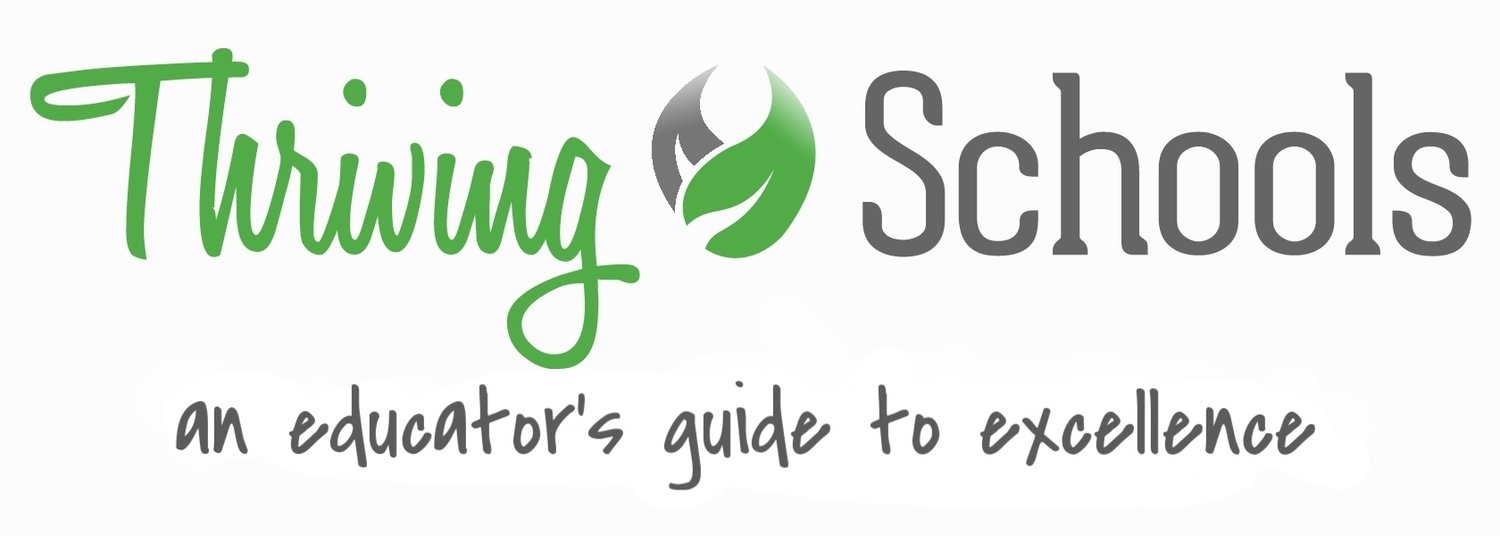Mindfulness and "letting go" of detention
/Marni Parsons is the Vice President of Student and Family Services for Bright Star Schools, a charter network that serves over 2,700 K-12 students in Los Angeles. We recently spoke with Marni about how restorative practices are used at Bright Star. This piece focuses on the details of a pilot program to replace detention with mindfulness.
Thriving Schools: Marni, can you tell us about the mindfulness program that you’ve been working on at Bright Star?
Marni: Let me start by saying I’m super, super excited about this. Right now, we are piloting the program at one of our schools and we are using materials from the Mindup Foundation. They’ve produced an amazing curriculum that teaches students about mindfulness and gives them an understanding that they’re the locus of control of their behavior.
Thriving Schools: Can you tell us more about the specifics of the program and how you determined which students would participate?
Marni: At the campus we have piloting this, detentions are after-school on Tuesdays and Thursdays. I should note that while we’re trying this program out, we didn’t want to remove detention from our teachers and seem clueless about what we were doing. So we took a third day, Friday, and started the program with a core group of students who were our “regular customers” on Tuesdays and Thursdays. They were invited to be a part of this program. They were spoken to very openly and honestly (and so were their parents) about how we think the program could benefit them. Then, we gave the general student population the opportunity to self-select into it, which gave us a few more students. So we’re piloting this program with 10 students currently.
Thriving Schools: And what does this mindfulness class actually look like? If a visitor were to stop by, what would they see?
Marni: We start with the Mindup curriculum, which usually takes 40-50 minutes. Again, this part helps students understand how their brains work and is paired up with several activities. For instance, we’re going to mindfully eat a Hershey’s kiss. We’re going to mindfully smell flowers. We’re going to mindfully use our senses. Then, the final 50 minutes is all practice based. So through these resources and several others, we’ve been able to cobble together our program.
Thriving Schools: Can you tell us about the other resources you’ve “cobbled together” for the practice-based portion of this program?
Marni: Again, let me emphasize that the Mindup curriculum is great! But it doesn’t contain the meditation practice that we wanted for our students. So we decided to use other programs and apps to provide this. We use the Insight app and meditations from Jon Kabat-Zinn.
Thriving Schools: Help us understand why you felt it necessary to supplement your program in this way?
Marni: For me, this is about taking it to a place that’s much deeper and more meaningful for our students, especially given what the statistics say about the challenges they face on a daily basis. I wanted to give our students a tool where they could take 5 minutes, open an app on their phone, and not have to worry about what’s going on outside their bedroom door if need be.
Thriving Schools: How will you measure the effectiveness of this program?
Marni: For the students in the program, we’re tracking attendance, grades, and behavior to see what, if anything, the program might be helping out with.
Thriving Schools: Are there any other resources or ideas that you could share with our community on implementing their own programs?
Marni: Sure, one more thing. The mindfulness program that’s been in the news recently in Baltimore is being supported by the Holistic Life Foundation. They are offering a summer training that education professionals can go through and learn how to bring a program like this to their own schools (the “click here to register” link at the bottom of the page will take you to this year’s dates). We’re going to be sending a few of our folks to the one this summer.
Note: This conversation was part of a larger interview that also included Marni’s thoughts on restorative justice practices. Those ideas will be posted in an upcoming piece. You can also check out a recent interview on student culture with Hrag Hamalian, CEO of the Bright Star network.


